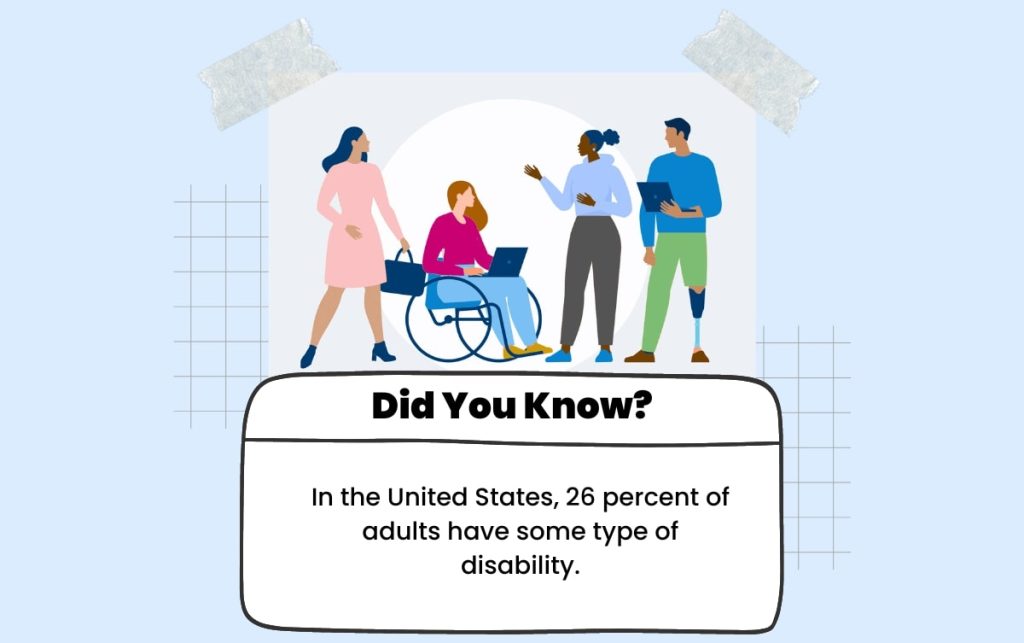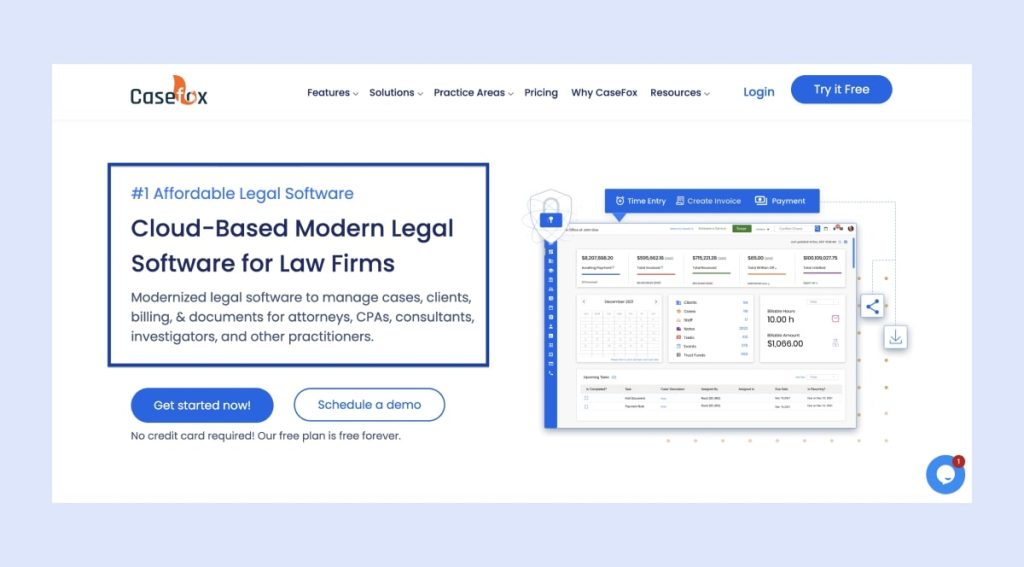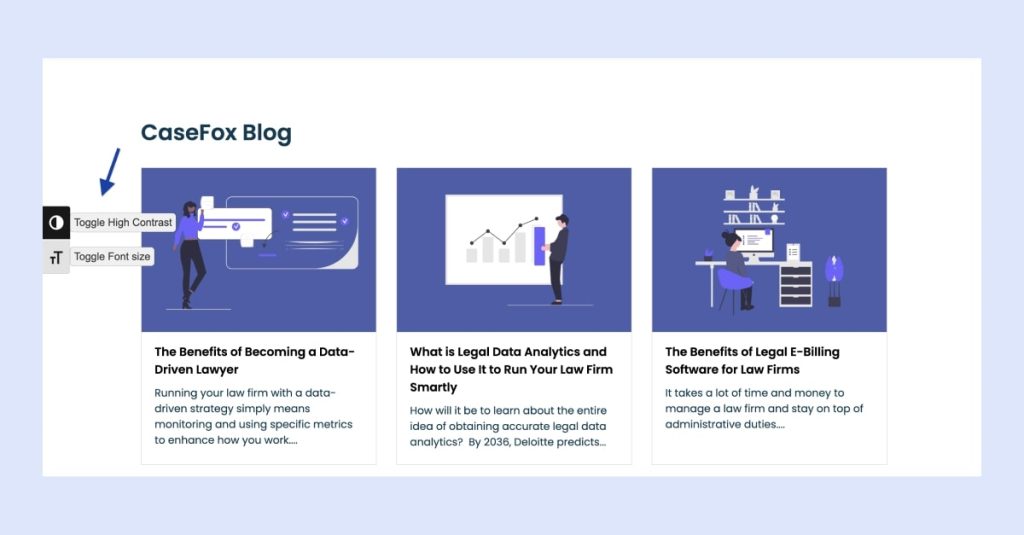It is estimated that 61 million adults in the United States have a disability. According to statistics, 81% of people with blindness or moderate or severe visual disabilities are older than 50.
Looking at such high stats of disabled people makes lawyers think about the ways in which they as individuals, can create a website that makes them feel equally comfortable to read, access, and interpret different content, videos, posts, and much more.
Well, now I know what you might be thinking. How can a website achieve the same? Is it affordable to incorporate this feature?
Success never comes hassle-free. A lot of effort, implementations, modifications, and time-to-time additions are the most crucial pillars of every law firm’s growth. Website compliance comes under the Americans with Disabilities Act (ADA). The act does not provide any separate parameters to follow, but it insists that websites should have good accessibility for everyone, including the disabled.
Multiple tools, for example, WAVE, W3C, Dynomapper, QualityLogic, AChecker, Tenon, and so on, are some helpful applications to build the perfect ADA compliance website for your law firm.
For any lawyer who is new to learning about the ADA act, or needs more clarity regarding its benefits, then this blog can be the right content for you. Through this blog, you will be able to find out what ADA exactly means and why should your website follow the guidelines of this act.
What is ADA Compliance?
In 2010, the Justice Department released guidelines for all public organizations to follow in order to be accessible to all people with disabilities. All disabled people who use computers or smart devices are included in this category.
ADA compliance refers to Americans with the Disability Act Standards for Accessible Design. It states that all websites should be made in such a way that they become accessible to all, including the ones who are disabled.
ADA compliance is a civil law that aims to provide equal opportunity to disabled people.
Why build a website that is ADA-compliant?
Having a streamlined website brings many considerations into place. Just adding content is not the ultimate goal for all businesses, moreover, making it accessible to all is something every law firm should focus on.

1. Easy Accessibility
Sometimes it’s not marketing, but a smart approach that increases your website traffic. Gaining both trust and clients is not achievable if you don’t have the right approach to target the same. Many websites lack the basic ADA needs and thus it decreases client traffic.
The US has many people who have disabilities, so building a website and making it accessible to them can help you target a large audience and Furthermore will help you gain more cases and matters in less time.
2. Satisfied Users
Over 80 percent of people have some or other kind of disability in the U.S. so creating a website that is not accessible to them makes your firm get only 20% of the customer traffic. Following guidelines and implementing the necessary changes directly create your firm image on top and make you market your website on a global market.
More and more visitors will come to your website and will be able to gain knowledge from it. The higher the number of readers, the higher the engagement your website will gain. Making your readers satisfied is possible if you execute the right guidelines of ADA.

3. Improved Readability
Have you ever wondered about making modifications to your content to make it more readable? Well, working on content visual improvements and achieving the best readability for your law firm website content makes you gain client trust and develop a base to gain high client intake easily.
Features like increased text, notable contrast, light background, negative contrast, links underlined, and so on can become a great help for people who have some kind of disability. W3C can help you know about different accessibility guidelines that will make your website ADA-compliant.

4. Strict Actions
The non-implementation of the ADA can be because of its hectic procedures, complicated HTML coding, and so on, but the noncompliance can become even more costly. Even if you unintentionally omitted the implementation of ADA guidelines as provided by the U.S. Department of Justice, then you will end up paying a large amount of penalty or fees.
Every lawyer’s aim should be not just developing a website but making it reach all kinds of people of diverse abilities. Other than heavy fees, your firm can end up losing customers at a large rate and can further affect the overall profit and trust of your law firm.
Want to know how CaseFox can help?

CaseFox is a modern cloud-based legal billing software that aims to provide an automated solution to lawyers, attorneys, law firms, CPAs, consultants, and many more. Today, when every sector is facing the heat of remote working, then making legal software that is affordable, user-friendly, and accessible for all types of individuals is what we always work on.
However, now your question will be how we solve the problem of accessibility. And how it becomes ADA-compliant.
CaseFox focused on its blog section, which is the main area of getting information. Setting a separate feature to help disabled individuals makes CaseFox more ADA-compliant.
Two features that CaseFox provides are:
- Toggle high contrast
- Toggle font size

Frequently Asked Questions
There are no specific parameters for implementing ADA guidelines on your website, or noncompliance can lead to a hefty lawsuit. More than this, your firm can go through some charges of legal fees, settlement, public relations issues, and many more.
Representing your website in the most accessible way makes your client trust your service and also creates a positive brand image for your law firm in the legal market. Making your website robust and understandable at the same time leads to more client intake.
ADA applies to all information and technology and all its websites. ADA compliance applies to private organizations, state and local organizations, organizations that work with public benefit, and businesses that are considered a type of public accommodation.
Conclusion
Noncompliance with the ADA rules cannot lead to complications in the firm’s growth, but will definitely take away numerous clients. Duty towards society and making the website more friendly for disabled people is something every firm’s website should incorporate. CaseFox helps its readers and viewers to have a good experience while visiting the website. It provides clarity in all content and further helps the reader adjust the text, font, background color, etc. according to their needs. Thinking about a wider concept is really important as your website may seem accessible, however, a disabled person may not find it readable.

